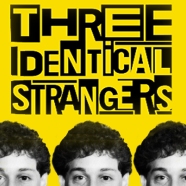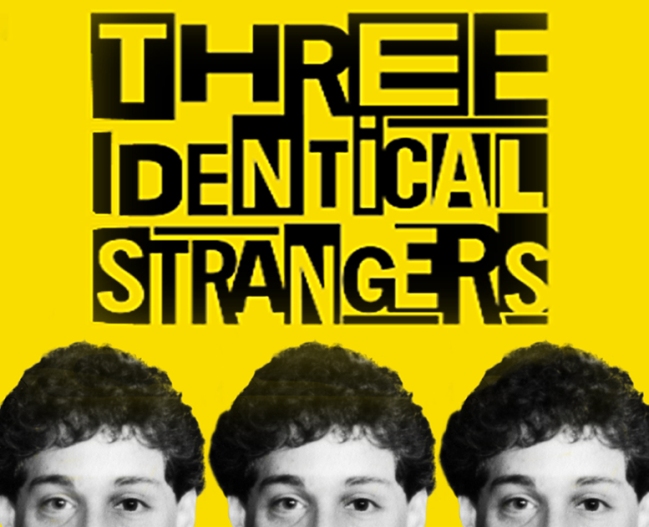 November
13
November
13
Tags
Three Identical Strangers (2018)

The word ‘documentary’ has traditionally signified a credible story, factually based, that served a higher social purpose. The definition of a documentary today is blurred; it exists on a continuum that includes elements of performative narration, fictional drama, reality TV, and news reporting. Whether the film ‘Three Identical Strangers (2018)is a movie or a documentary is in the eye of the beholder, but it is the way that it blends both styles of film that make it both entertaining and thought provoking.
The story was widely sensationalised in the 1980s when identical 19-year old triplets were reunited after being adopted by three different families. The film incorporates contemporary interviews, archival footage, newspaper reportage, and dramatisations to create a seamless narrative focused on the injustice of the separation. In particular, the film questions the morality of separating babies at birth and then using them for in-depth longitudinal research.
The opening scenes show the first meetings between David Kellman, Bobby Shafran and Eddy Galland and their stunned reactions on learning that each had two mirror image brothers. They are similar in taste, habits and educational attainment, despite being raised by families of different class background. The narration turns dark as we are told about the Jewish adoption agency and research team that studied the triplets as if they were lab-rats. We learn of their unresolved psychological issues that in one case ends in tragedy. The narrator turns sleuth when confronted by the angry parents of the reunited triplets wanting to know how this could happen. A dramatisation shows the research team celebrating over glasses of champagne for having ‘dodged a bullet’ when the parents decide not to pursue the case.
It is not clear what is the purpose of this documentary: is it voyeuristic entertainment over the phenomenon of separated triplets or is it a thriller on the racially and class-loaded question of ‘nature versus nurture’? Or is it an unashamed emotional exploitation of three biologically-close humans who are brought together again after two decades of separation? As the film offers little by way of coherent clues, we are left to read the film according to our own interests. As the stars are not actors, the usual performance appraisal is not relevant, but the narrator’s increasingly ominous tone unmistakably joins the dots to create a sinister narrative arc.
The ethical issues raised in this film are somewhat dated as such separation studies would never be supported in today’s research environment. Motives for the study and its secrecy are implied but not examined. While the film could have achieved more if it knew what it wanted to achieve, it does raise intriguing questions about what shapes our personality.

Director: Tim Wardle
Stars: David Kellman, Bobby Shafran, Eddy Galland

This fell flat for me, too. it seemed like it rising to something, but as you say, what was it trying to say?
LikeLiked by 1 person
This is a great review. I couldn’t put my finger on what I felt when I walked out of the theater at the end of this one. But you articulated my discomfort very well.
LikeLiked by 1 person